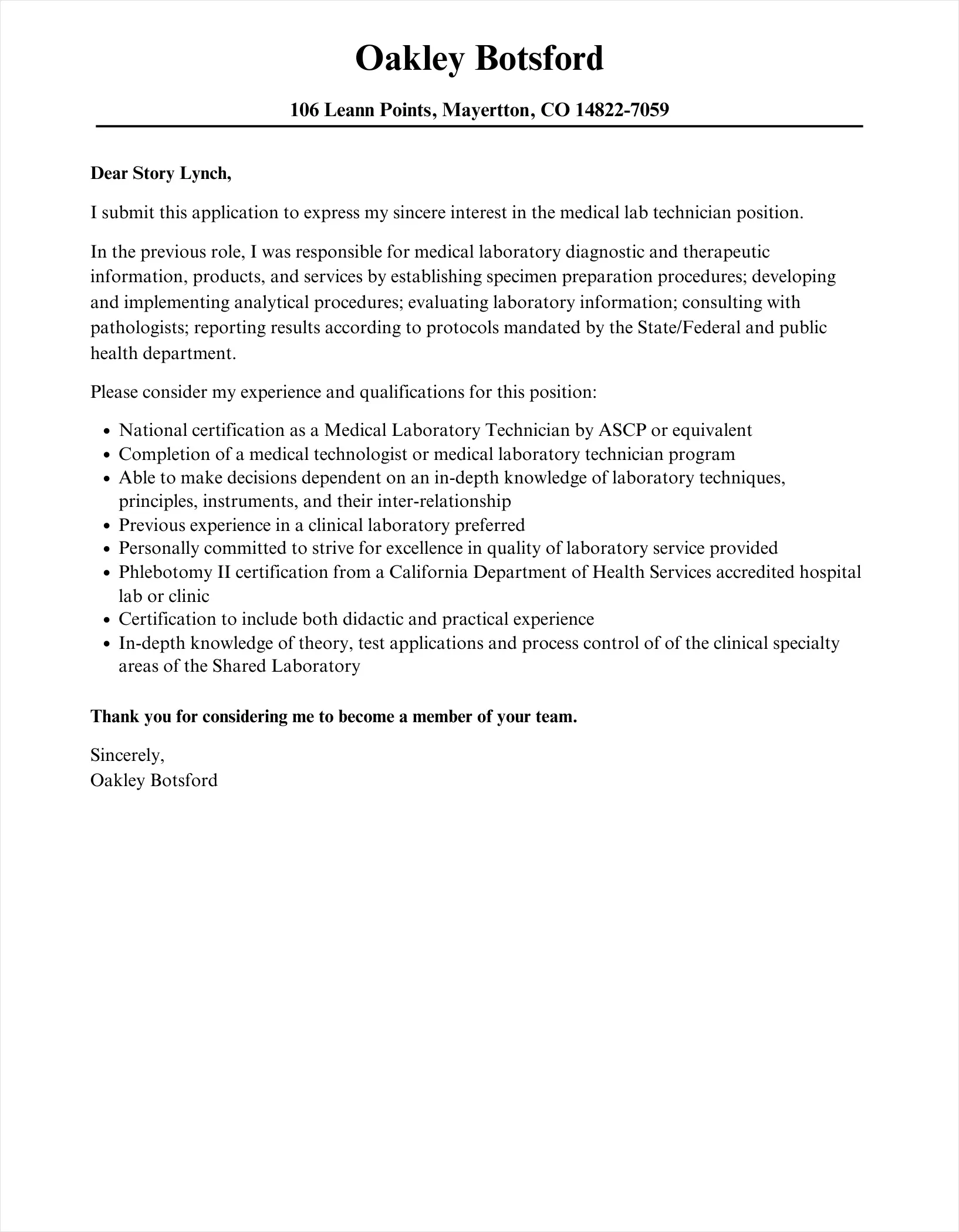Crafting Your Lab Technician Cover Letter
A well-crafted cover letter is your first opportunity to make a positive impression on a potential employer. For a lab technician, this is especially crucial, as it showcases not just your skills but also your attention to detail, communication abilities, and enthusiasm for the role. This guide provides a comprehensive approach to creating a cover letter that will make you stand out from the competition. From highlighting your key skills and experience to tailoring your letter to the specific job and employer, we will explore the essential elements that contribute to a compelling cover letter for a lab technician position. Remember, the goal is to present yourself as a qualified and enthusiastic candidate eager to contribute to the laboratory’s success. A strong cover letter significantly increases your chances of getting an interview and ultimately landing the job.
Understanding the Purpose of a Cover Letter
A cover letter isn’t just a formality; it’s your chance to tell a story about yourself, connecting your skills and experience to the specific requirements of the lab technician position. It goes beyond the list of accomplishments provided in your resume. Think of it as a personal introduction where you can explain your passion for laboratory work and why you’re the perfect fit for the job. The cover letter also allows you to demonstrate your communication skills, showing the employer that you can express yourself clearly and professionally. Moreover, it’s your opportunity to highlight specific achievements and quantify your contributions whenever possible, providing concrete evidence of your capabilities. A well-written cover letter will not only grab the hiring manager’s attention, but also increase the likelihood of your resume being reviewed thoroughly.
Highlighting Relevant Skills
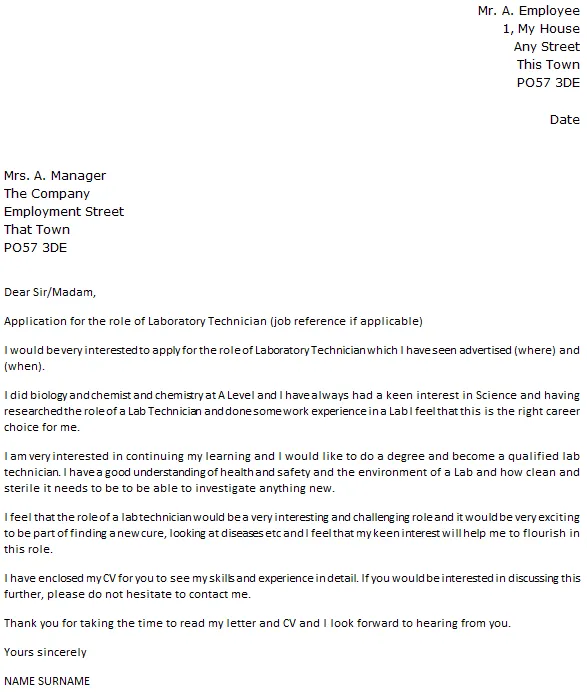
Your cover letter should immediately showcase the skills most relevant to the lab technician position. This is where you draw a connection between your experience and the specific needs of the employer. Review the job description carefully and identify the keywords related to required skills. Then, incorporate these keywords naturally into your cover letter, providing concise examples of how you have used those skills in previous roles. Focus on demonstrating how your abilities align with the laboratory’s requirements, showing that you are a good fit. Prioritize those skills that are most critical to the role. Remember, a well-structured cover letter is also a well-targeted one. The clearer you are about your expertise, the better the chances you have to impress the potential employer.
Technical Skills to Showcase
Lab technician positions require a strong foundation of technical skills. In your cover letter, you should highlight any experience you have with laboratory equipment, such as microscopes, centrifuges, and analytical instruments. Mention specific techniques you are proficient in, such as sample preparation, staining, or various types of assays. If you have experience with specialized lab procedures, make sure to list them. You should always provide a brief description of the tasks you perform in order to give a better idea of your skills. Proficiency in data analysis and record-keeping is also valuable, so don’t hesitate to mention relevant software experience or your ability to maintain accurate lab records. By demonstrating your technical proficiency, you will demonstrate your readiness to perform the essential tasks of the job.
Soft Skills to Emphasize
While technical skills are important, soft skills are equally crucial for lab technicians. Highlight your ability to work as part of a team, your communication skills, and your attention to detail. Demonstrate your ability to follow instructions, your problem-solving skills, and your willingness to learn and adapt to new procedures. Include examples of when you had to collaborate effectively with other team members, communicate complex information clearly, or solve technical problems. Since laboratory work requires accuracy and precision, make sure to emphasize your attention to detail. Showcasing a balance of technical and soft skills will make you a well-rounded candidate. These skills are what allow you to contribute to the success of the lab.
Researching the Company
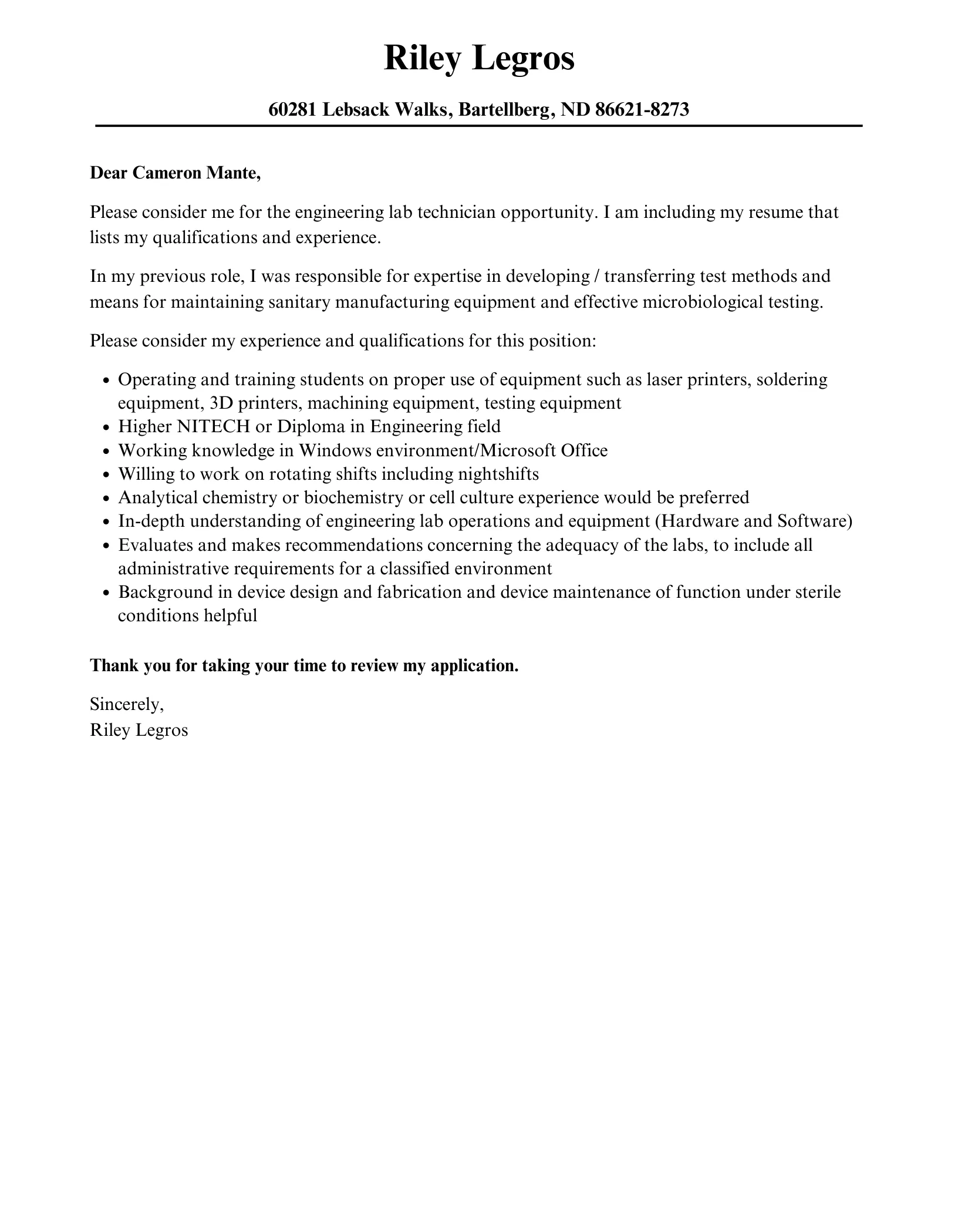
Before writing your cover letter, spend some time researching the company you are applying to. The more you know about the organization, the better you can tailor your cover letter to match its values and objectives. Visit the company’s website, read their mission statement, and explore any news or articles about their work. Understanding their current projects and research areas will allow you to demonstrate your genuine interest in the position. Incorporate some of this information into your cover letter to show that you have done your homework. This is an important step in the process, which can give the hiring manager an impression that you have given thought to applying for this specific role. This also shows that you are interested in working with their team.
Tailoring Your Letter
Generic cover letters rarely impress hiring managers. Tailor your cover letter to each specific job application. Avoid using a template without making significant changes, and instead, rewrite the letter to align with the specific requirements of the lab technician position. Use the job description to identify the key skills and qualifications the employer is seeking, and then adjust your letter to highlight how your experiences match those requirements. Mention the company’s name throughout the letter and highlight any specific projects or goals that resonate with you. This targeted approach will show that you are serious about the job and have taken the time to prepare a personalized application. When writing this letter, always have the job description open. This will ensure that you follow all of the instructions.
Keywords for Applicant Tracking Systems
Many companies use Applicant Tracking Systems (ATS) to screen applications. To increase your chances of passing the initial screening, include relevant keywords from the job description in your cover letter. Identify the key skills, technologies, and qualifications mentioned in the job posting and incorporate these keywords naturally into your text. Avoid keyword stuffing; instead, integrate these words into your descriptions of your experiences and skills. This will help your cover letter get noticed by the ATS and improve your chances of being reviewed by a human. Always make sure to proofread your cover letter after integrating keywords. Proofreading will ensure that you have included the keywords correctly and you have not made any grammatical errors.
Structuring Your Cover Letter
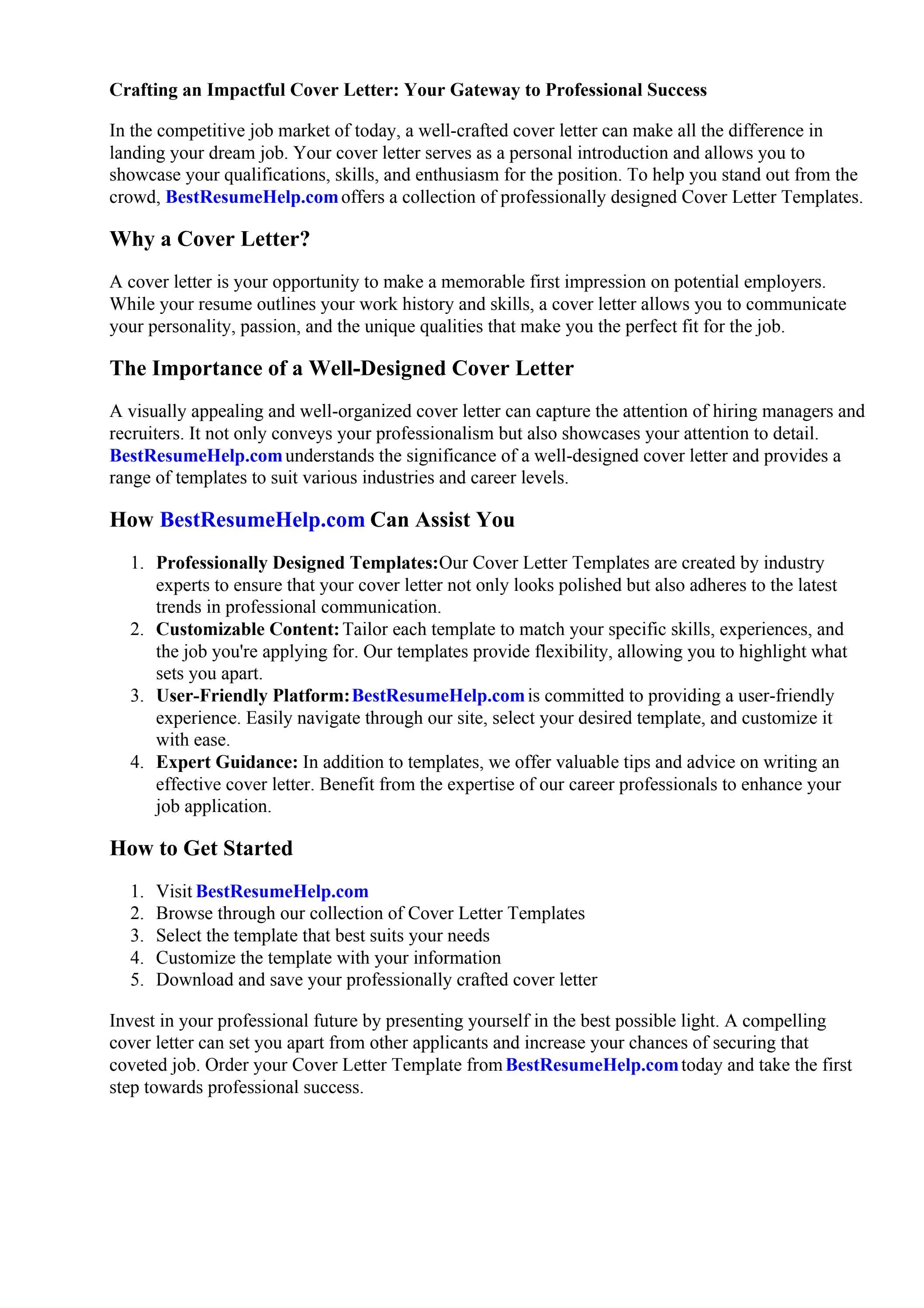
A well-structured cover letter is easy to read and conveys your key qualifications effectively. Start with a clear and professional header that includes your contact information, the date, and the employer’s contact information. The body of the letter should include an opening paragraph that immediately grabs the reader’s attention, a few paragraphs highlighting your relevant experience and skills, and a closing paragraph that reiterates your interest and includes a call to action. Use clear and concise language throughout, breaking up large blocks of text with short paragraphs and bullet points when appropriate. Use a professional font and formatting. With a strong structure, you can effectively convey your qualifications and increase your chances of securing an interview.
Header and Contact Information
Begin your cover letter with a header that includes your full name, address, phone number, and email address. This information should be formatted in a clear and easy-to-read manner. Below your information, include the date, followed by the employer’s name, title, and address. Make sure to address the letter to the specific hiring manager whenever possible; if you don’t know the hiring manager’s name, research it or use a professional salutation, such as “Dear Hiring Manager.” This attention to detail sets a professional tone from the start and shows that you’ve taken the time to prepare the letter correctly.
The Opening Paragraph
The opening paragraph should immediately capture the reader’s attention and clearly state the purpose of your letter. Mention the specific lab technician position you are applying for and how you found the job posting. Briefly introduce yourself and highlight your most relevant skills or qualifications. You can also express your enthusiasm for the role and the company. Keep the opening paragraph concise and focused, setting the stage for the rest of your letter. The opening paragraph is your first opportunity to capture the attention of the hiring manager, so it is very important.
Body Paragraphs Highlighting Experience
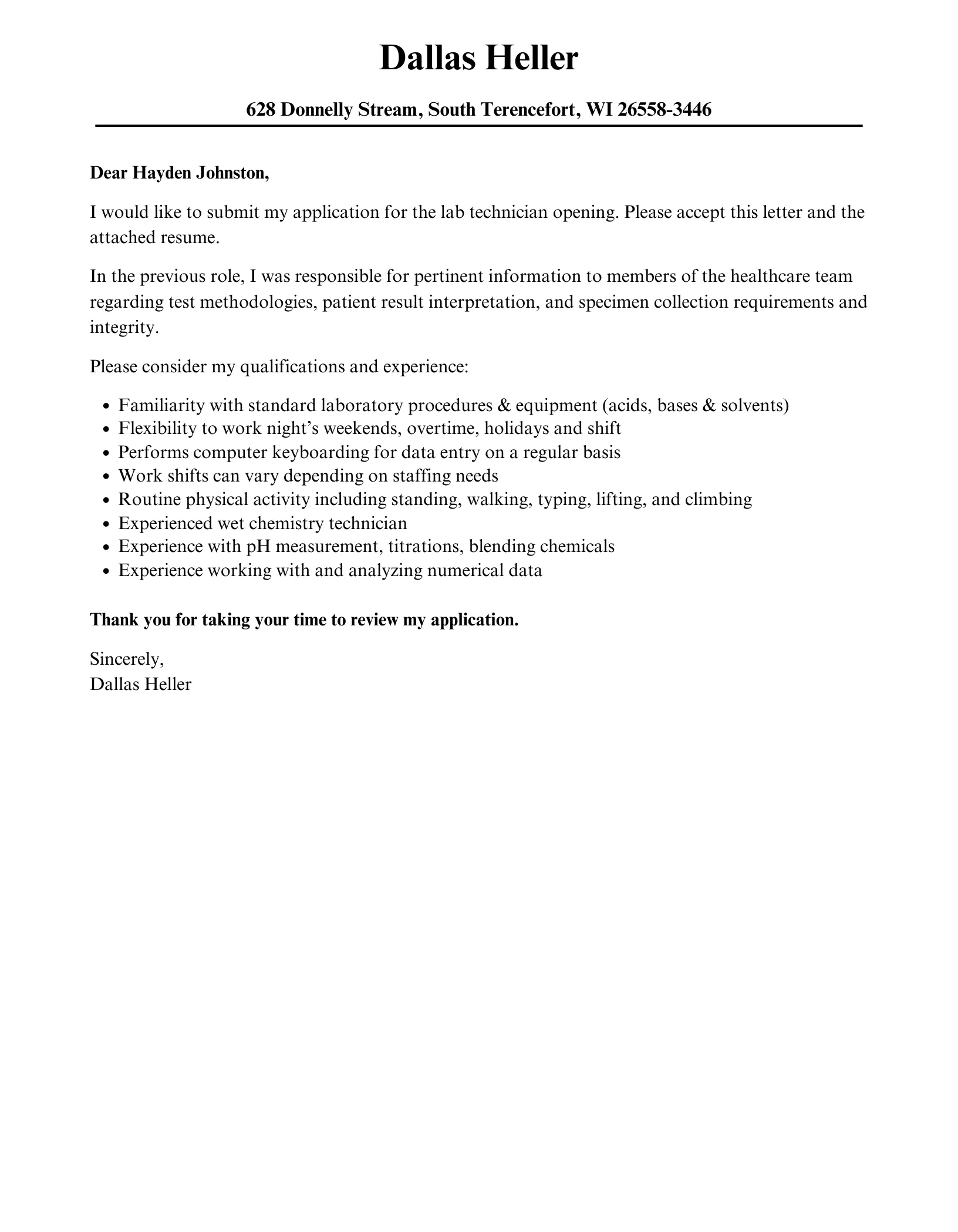
The body paragraphs are where you provide detailed information about your skills, experience, and accomplishments. Use these paragraphs to highlight the most relevant aspects of your background in relation to the job requirements. Provide specific examples of how you’ve used your technical skills, problem-solving abilities, and teamwork skills in previous roles. Quantify your achievements whenever possible using numbers or percentages to demonstrate the impact of your contributions. Structure your body paragraphs logically, perhaps using the STAR method (Situation, Task, Action, Result) to describe your experiences. By being concise and focused, you will ensure that the hiring manager can easily understand what you bring to the table.
Quantifying Achievements
Whenever possible, quantify your achievements to demonstrate the impact of your work. Instead of just saying you “improved lab efficiency,” state that you “reduced turnaround time by 15%” or “improved accuracy rates by 10%.” These concrete examples provide tangible evidence of your abilities and make your accomplishments more impactful. For example, “Successfully managed and maintained inventory of lab supplies, resulting in a 5% reduction in supply costs.” Or, “Performed over 1000 tests with 99% accuracy.” Using numbers and data will help you show the employer what you are capable of doing. This data also provides the employer with a way to measure your impact in the workplace.
The Closing Paragraph
The closing paragraph should reiterate your interest in the position and express your enthusiasm for the opportunity. Thank the employer for their time and consideration and include a clear call to action. State that you are looking forward to hearing from them and are available for an interview. You can also reiterate how your skills and experience align with the company’s needs. End your cover letter with a professional closing, such as “Sincerely” or “Best regards,” followed by your name. A strong closing paragraph reinforces your interest in the position and encourages the hiring manager to take the next step.
Review and Proofreading
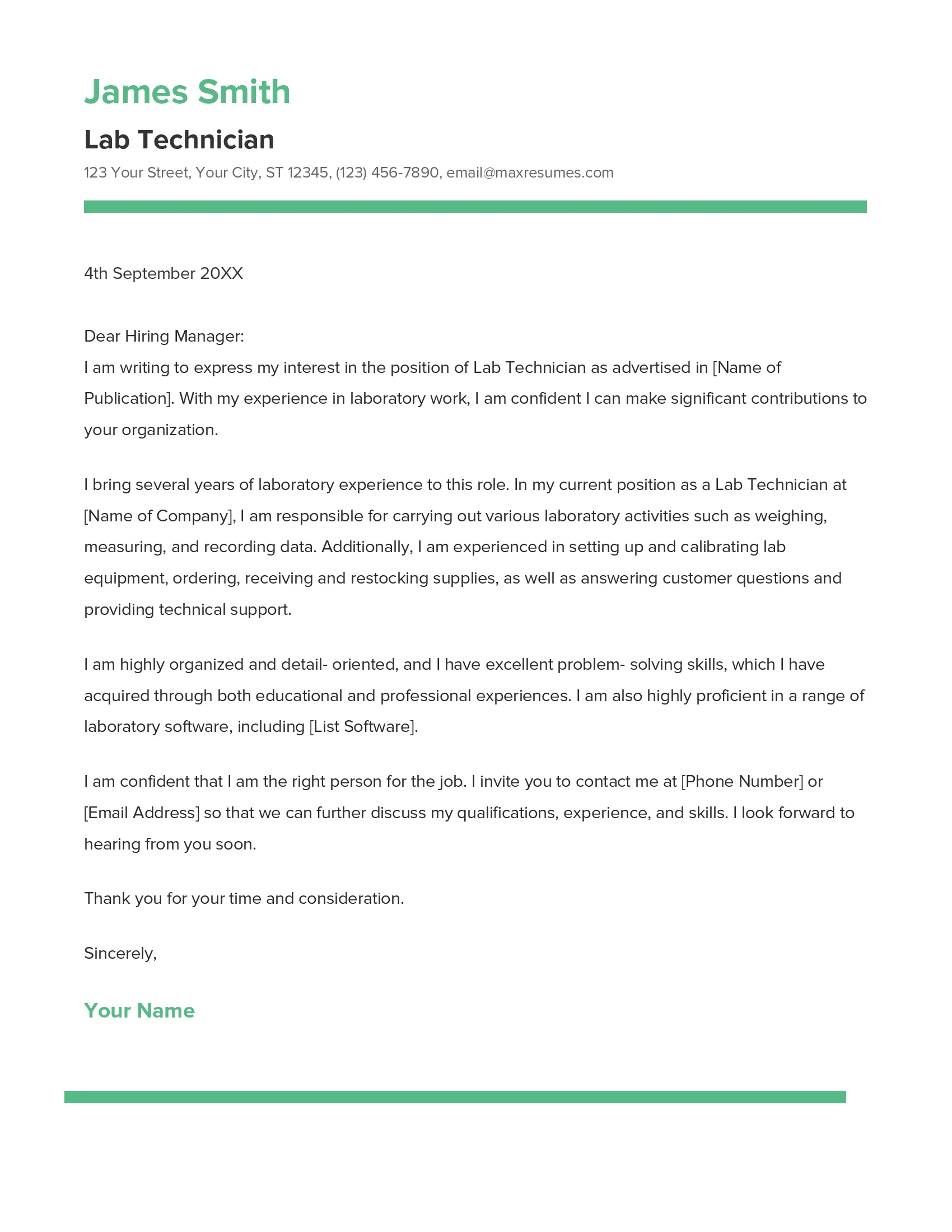
Before submitting your cover letter, review and proofread it carefully. Errors in grammar, spelling, or formatting can create a negative impression and undermine your credibility. Take the time to check for any typos, grammatical errors, or inconsistencies in your letter. Ask a friend or colleague to review your cover letter for clarity and accuracy. Ensuring a polished and error-free letter demonstrates your attention to detail and professionalism. You can use online tools such as Grammarly to proofread your cover letter. A well-proofread cover letter increases your chances of a positive impression.
Checking for Grammar and Spelling
Carefully check your cover letter for any grammatical errors and spelling mistakes. These types of errors can make you appear careless and unprofessional. Use a spell-checker and grammar checker to identify any potential issues. Make sure you have used proper punctuation and sentence structure. Pay close attention to commonly confused words, such as “there,” “their,” and “they’re,” or “to,” “too,” and “two.” Reading your cover letter aloud can help you catch any awkward phrasing or errors that you may have missed. By being meticulous about grammar and spelling, you will demonstrate a commitment to quality and professionalism.
Formatting and Readability
Proper formatting is crucial for ensuring your cover letter is easy to read and visually appealing. Use a professional font, such as Times New Roman or Arial, and maintain a consistent font size throughout the document. Use clear and concise language, and avoid long, dense blocks of text. Break up your paragraphs to make the letter easier to scan. Pay attention to your spacing and ensure the letter is properly aligned. Consider using bullet points to highlight your key skills and accomplishments. Well-formatted letters are easier to read. A well-formatted letter is a clear representation of your skills and experience.
